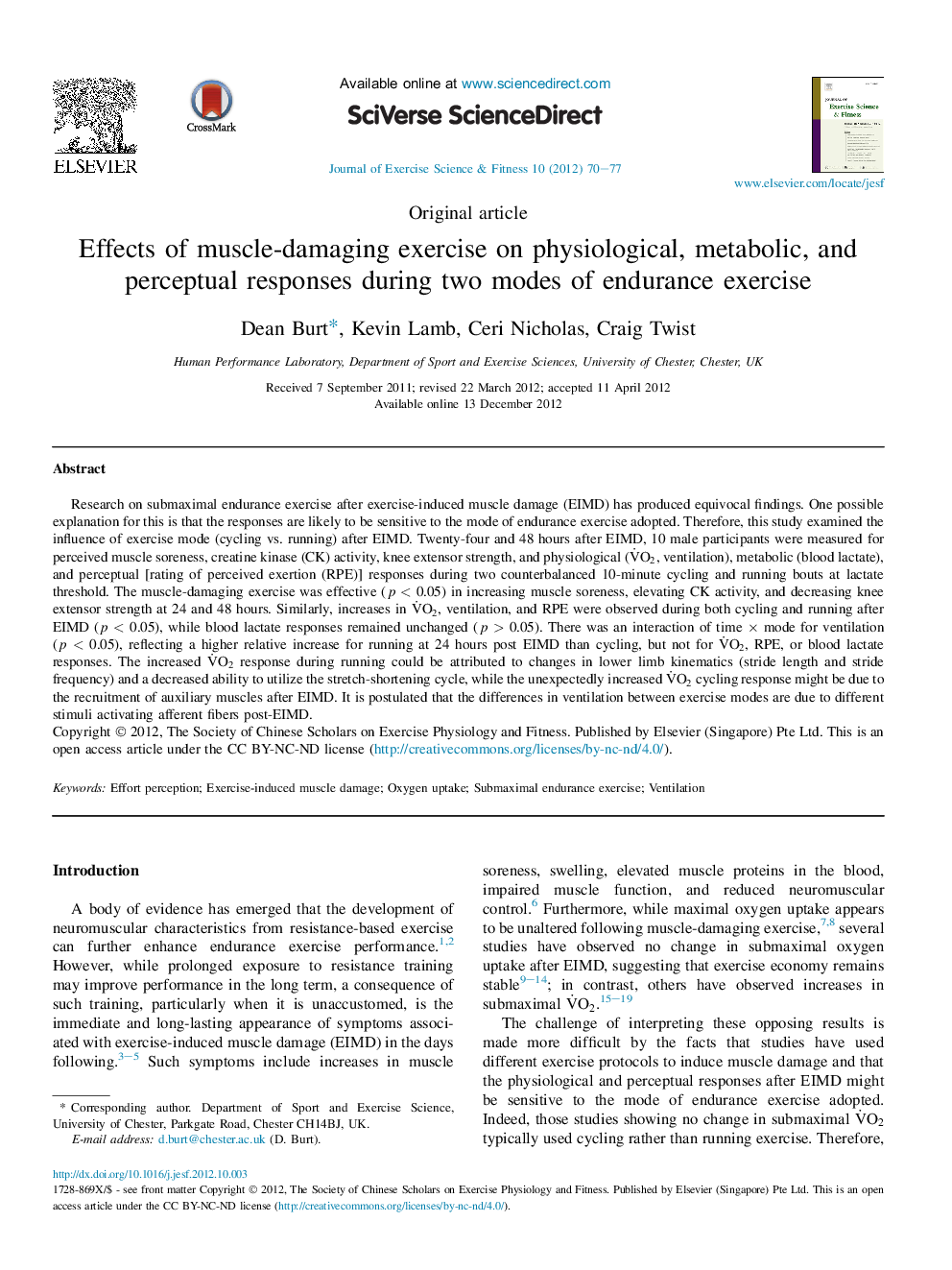| کد مقاله | کد نشریه | سال انتشار | مقاله انگلیسی | نسخه تمام متن |
|---|---|---|---|---|
| 2739643 | 1567063 | 2012 | 8 صفحه PDF | دانلود رایگان |

Research on submaximal endurance exercise after exercise-induced muscle damage (EIMD) has produced equivocal findings. One possible explanation for this is that the responses are likely to be sensitive to the mode of endurance exercise adopted. Therefore, this study examined the influence of exercise mode (cycling vs. running) after EIMD. Twenty-four and 48 hours after EIMD, 10 male participants were measured for perceived muscle soreness, creatine kinase (CK) activity, knee extensor strength, and physiological (V˙O2, ventilation), metabolic (blood lactate), and perceptual [rating of perceived exertion (RPE)] responses during two counterbalanced 10-minute cycling and running bouts at lactate threshold. The muscle-damaging exercise was effective (p < 0.05) in increasing muscle soreness, elevating CK activity, and decreasing knee extensor strength at 24 and 48 hours. Similarly, increases in V˙O2, ventilation, and RPE were observed during both cycling and running after EIMD (p < 0.05), while blood lactate responses remained unchanged (p > 0.05). There was an interaction of time × mode for ventilation (p < 0.05), reflecting a higher relative increase for running at 24 hours post EIMD than cycling, but not for V˙O2, RPE, or blood lactate responses. The increased V˙O2 response during running could be attributed to changes in lower limb kinematics (stride length and stride frequency) and a decreased ability to utilize the stretch-shortening cycle, while the unexpectedly increased V˙O2 cycling response might be due to the recruitment of auxiliary muscles after EIMD. It is postulated that the differences in ventilation between exercise modes are due to different stimuli activating afferent fibers post-EIMD.
Journal: Journal of Exercise Science & Fitness - Volume 10, Issue 2, December 2012, Pages 70–77